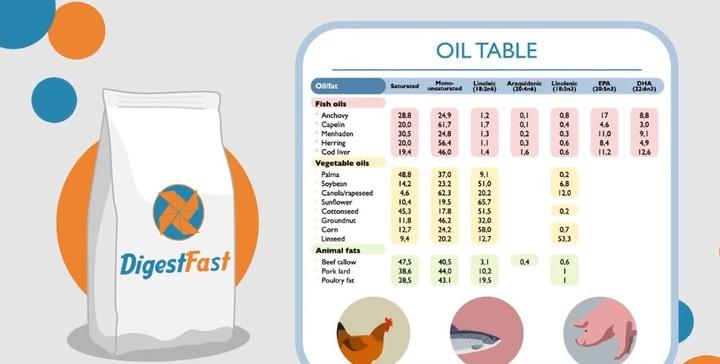Methionine in Poultry Nutrition: A Review
Published: August 24, 2023
Summary
1. Introduction The best strategy to optimize production and reproduction in poultry species while mitigating the harmful effects of environmental conditions is proper nutrition 1,2,3 . One of the pillars of nutrition is the use of amino acids in poultry diets, among which Methionine (Met) represents the first limiting amino acid in broilers. As Bunchasak 4 reported, Met can act as an amino a...
Related topics:
Mentioned in this news release:
Recommend
Comment
Share

17 de septiembre de 2023
This is an interesting review. However, there are two or three important dietary interactions that have been overlooked.
First, it is mentioned that methionine is necessary for the synthesis of choline, but I couldn't find anything on the re-methylation of homocysteine by betaine to form methionine. The re-methlyation of homocysteine is accomplished by betaine in the feed or that is formed in the oxidation of choline. There are a number of papers on this subject not related to heat stress or old laying hens as reported in this review. I believe betaine is the reason that some organic producers think hens have a lower methionine requirement on wheat-based diets compared to corn based diets. Wheat naturally has rather high levels of betaine while levels in corn are not measurable.
Second, there is a strong, negative, interaction between methionine and copper levels when copper is fed at pharmacological, growth promoting, levels. Pharmacological copper has long been fed and known to act in a similar manner to antibiotic feeding. However, without adequate supplementation of methionine the high levels of copper will actually diminish growth. The best responses were found with high levels of both. An interesting point is that high levels of copper in poultry manure may be a good way to provide copper to forages for cattle, but not for sheep.
Methionine requirements have always been particularly difficult to quantitate. We teach that to determine requirements for any nutrient, feed a basal diet with adequate or excessive levels of all other nutrients. Low cystine, or (choline + betaine), or folate, or vitamin B12 levels, or high copper, will make methionine requirements appear abnormally high. In the same manner, low methionine levels will make requirements for the other nutrients appear abnormally high. Folate and vitamin B12 are necessary for the proper processing of the raw materials, labile methyl groups, that come from methionine, choline or betaine or dimethylthetin. And then any excesses of dietary amino acids that have to be oxidized to uric acid, or arginine that is converted to creatine, increase labile methyl group needs that must come from methionine, choline (betaine) or dimethylthetin. And then excess copper can complicate requirements further. The key may be to provide adequate levels of the least expensive nutrients first, and then the most expensive, under each set of dietary conditions (broilers, layers, breeders, etc.)
First, it is mentioned that methionine is necessary for the synthesis of choline, but I couldn't find anything on the re-methylation of homocysteine by betaine to form methionine. The re-methlyation of homocysteine is accomplished by betaine in the feed or that is formed in the oxidation of choline. There are a number of papers on this subject not related to heat stress or old laying hens as reported in this review. I believe betaine is the reason that some organic producers think hens have a lower methionine requirement on wheat-based diets compared to corn based diets. Wheat naturally has rather high levels of betaine while levels in corn are not measurable.
Second, there is a strong, negative, interaction between methionine and copper levels when copper is fed at pharmacological, growth promoting, levels. Pharmacological copper has long been fed and known to act in a similar manner to antibiotic feeding. However, without adequate supplementation of methionine the high levels of copper will actually diminish growth. The best responses were found with high levels of both. An interesting point is that high levels of copper in poultry manure may be a good way to provide copper to forages for cattle, but not for sheep.
Methionine requirements have always been particularly difficult to quantitate. We teach that to determine requirements for any nutrient, feed a basal diet with adequate or excessive levels of all other nutrients. Low cystine, or (choline + betaine), or folate, or vitamin B12 levels, or high copper, will make methionine requirements appear abnormally high. In the same manner, low methionine levels will make requirements for the other nutrients appear abnormally high. Folate and vitamin B12 are necessary for the proper processing of the raw materials, labile methyl groups, that come from methionine, choline or betaine or dimethylthetin. And then any excesses of dietary amino acids that have to be oxidized to uric acid, or arginine that is converted to creatine, increase labile methyl group needs that must come from methionine, choline (betaine) or dimethylthetin. And then excess copper can complicate requirements further. The key may be to provide adequate levels of the least expensive nutrients first, and then the most expensive, under each set of dietary conditions (broilers, layers, breeders, etc.)
Recommend
Reply
1

Would you like to discuss another topic? Create a new post to engage with experts in the community.














